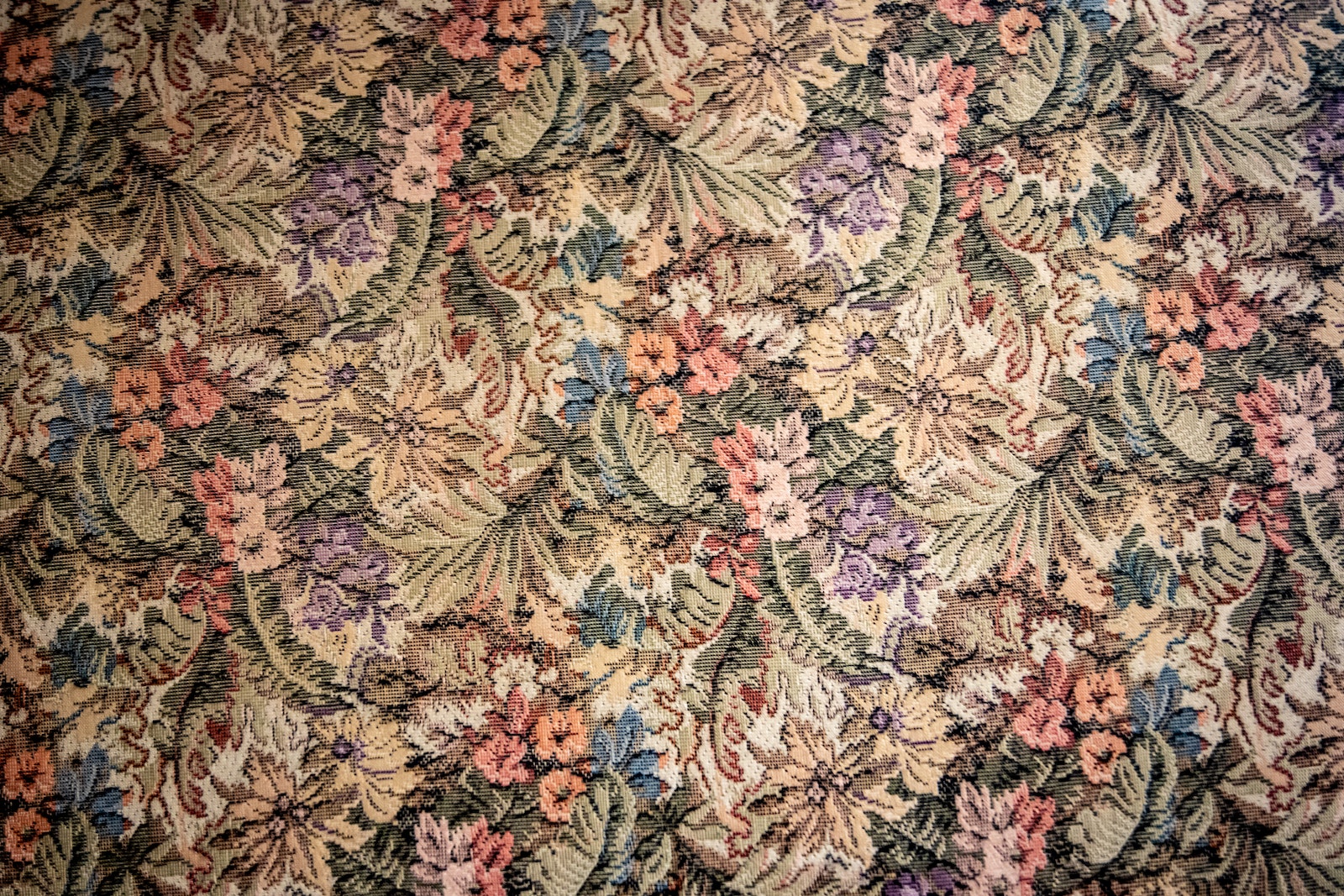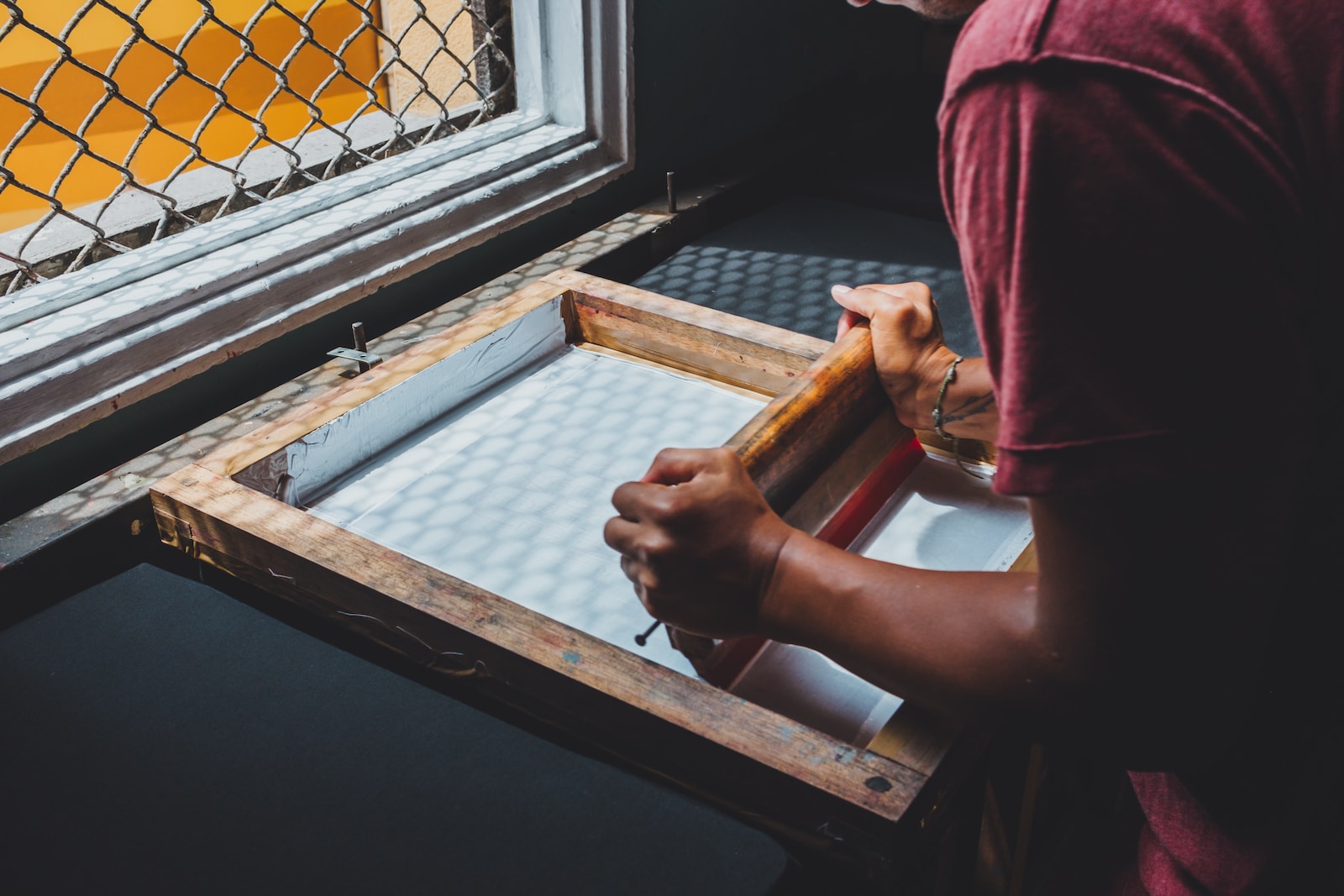Introduction
Wall art has long been an integral part of human expression and creativity, serving as a medium through which stories are told, cultures are celebrated, and aesthetics are enhanced. Two prominent forms of wall art that have captivated generations are tapestry and embroidery. Rich in history and cultural significance, tapestry and embroidery represent distinct artistic disciplines that involve intricate craftsmanship, each with its unique characteristics and techniques.
Brief Overview of Tapestry and Embroidery as Forms of Wall Art
Tapestry is a form of textile art that dates back to ancient civilizations such as Egypt and Greece. Its popularity reached its zenith during the Middle Ages in Europe when magnificent tapestries adorned grand palaces, cathedrals, and castles.
A true masterpiece woven in time, tapestries are created by interlacing different colored threads on a vertical loom to form intricate pictures or designs. Embroidery, on the other hand, traces its origins to ancient China, Egypt, and India.
This delicate art form involves stitching decorative patterns or motifs onto fabric using various types of threads such as silk, cotton, or metallic ones. As an artistic craft that requires meticulous attention to detail and skillful needlework techniques, embroidery has been symbolic throughout history – representing wealth, social status or religious beliefs.
Importance of Understanding the Differences between the Two
An appreciation for tapestry and embroidery goes beyond mere aesthetics; it encompasses an understanding of their unique attributes in order to fully comprehend their historical contexts, technical intricacies,and the stories they convey. Recognizing the differences between these two forms of wall art allows us to delve into their individual characteristics more deeply. By understanding the distinctions between tapestry and embroidery for wall art purposes, we can make informed decisions about which art form aligns with our personal tastes and preferences.
Additionally, this knowledge enables us to better appreciate the skill and craftsmanship involved in creating these pieces, as well as their cultural significance. Distinguishing between tapestry and embroidery not only enhances our understanding of art history but also provides insights into the diverse techniques and materials used, ultimately enriching our enjoyment of these captivating forms of wall art.
Tapestry: A Masterpiece Woven in Time
Definition and Historical Background
Tapestry, an exquisite form of textile art, has a long and fascinating history that dates back to ancient civilizations such as Egypt and Greece. Derived from the Latin word “tapis,” meaning carpet or coverlet, tapestries were initially used as decorative coverings for walls, floors, and furniture. However, it was during the Middle Ages in Europe that tapestry truly flourished as a prestigious art form.
During this period, tapestries became highly valued possessions among royalty and nobility. They adorned castles, palaces, and cathedrals with their grandeur.
The historical significance of tapestries lies not only in their aesthetic appeal but also in their ability to convey stories and preserve cultural heritage. They were often commissioned by wealthy patrons to commemorate important events or depict significant mythological tales.
Materials and Techniques Used in Tapestry Making
The creation of a tapestry requires meticulous craftsmanship using high-quality fibers such as wool, silk, or linen. These fibers are carefully selected for their ability to absorb dyes and retain vibrant colors over time. The weaving process itself is intricate and labor-intensive.
Tapestries are traditionally woven on vertical looms where warp threads are stretched tightly vertically while weft threads (the ones being woven) are passed horizontally through them. This technique allows for the creation of complex designs with multiple layers of yarns that form the intricate patterns seen in tapestries.
Characteristics of Tapestries as Wall Art
As wall art pieces, tapestries possess distinct characteristics that set them apart from other forms of artistic expression. One notable feature is their large-scale compositions which often cover expansive areas on walls.
This generous size allows for the inclusion of rich details while providing a captivating visual impact. The vibrant colors used in tapestries are achieved through skillful dyeing techniques, resulting in hues that remain vivid even after centuries.
Moreover, tapestries frequently depict historical events, mythical stories, or scenes from nature. These subject matters not only add depth and narrative to the artwork but also serve as a means of documentation and cultural representation.
Tapestries are not merely decorative elements for walls; they are intricate masterpieces woven with expertise and care. Their historical roots, use of high-quality materials, and visually captivating characteristics make them exceptional examples of textile artistry.
Embroidery: Stitching Stories on Fabric Canvas
Definition and Cultural Significance
Embroidery, an ancient art form, has a deep-rooted cultural significance that can be traced back to civilizations such as China, Egypt, and India. Defined as the art of decorating fabric or other materials with needle and thread, embroidery holds a special place in history due to its association with numerous symbolic representations. In many cultures, embroidery served as a status symbol reflecting wealth, privilege, or social standing.
Elaborate and intricate embroideries were often displayed on garments worn by royalty or noble families to designate their prominence within society. Additionally, embroidery played a significant role in religious contexts where it was used to depict sacred symbols or narrate religious stories through visually captivating textile creations.
Materials and Techniques Used in Embroidery
The beauty of embroidery lies not only in its designs but also in the array of materials and techniques employed to create these stunning works of art. Embroiderers utilize various threads to achieve different effects and textures on fabric canvases. Silk threads are favored for their lustrous sheen and smooth finish which lend an opulent appearance to the embroidered piece.
Cotton threads offer versatility due to their strength and availability in an extensive range of colors. Metallic threads add a touch of glamour with their shimmering quality that catches the light.
In addition to the diverse selection of threads used in embroidery, there is also a wide variety of stitching methods employed by skilled embroiderers. Cross-stitching is one popular technique where X-shaped stitches are formed across evenly spaced holes or grid lines on fabric.
This method allows for precision and neatness while creating intricate patterns or motifs. Satin stitch is another common technique whereby long parallel stitches are densely placed side by side to fill areas with solid blocks of color or texture.
Characteristics of Embroidered Wall Art
When it comes to wall art, embroidered pieces possess distinct characteristics that set them apart from other forms of artwork such as tapestries. One notable difference is their relatively smaller size compared to tapestries. Embroidered wall art tends to be more intimate in scale, making it suitable for adorning smaller spaces or adding a touch of elegance to specific corners in a room.
The delicacy and intricacy of embroidered wall art are the hallmarks of this craft. The meticulous needlework involved creates astonishingly detailed designs, capturing even the finest nuances with precision and finesse.
From the subtle gradations of color to the intricate interplay of stitches, every element is carefully crafted to achieve a visually captivating result. This level of detail showcases the mastery, skill, and patience required by embroiderers who pour their passion into each stitch.
Embroidery’s ability to fuse storytelling and decorative art has made it an enduring form of expression throughout history. Through its varied materials, techniques, and attention to detail, embroidery continues to enchant audiences with its beauty and cultural significance.
Differences Between Tapestry and Embroidery for Wall Art
A. Size and Scale
When comparing tapestries and embroidered wall art, one of the most evident differences lies in their size and scale. Tapestry, known for its grandiose dimensions, is typically created on a large scale to cover expansive walls or spaces. These magnificent textile artworks can range from several square feet to even monumental sizes, making them a statement piece that commands attention. The vastness of tapestries allows for intricate details to be portrayed with remarkable clarity, enabling the viewer to immerse themselves in the rich narrative woven into the fabric. On the other hand, embroidered wall art tends to be smaller in size compared to tapestries. This reduction in scale serves a purpose as it allows these delicate works of art to complement more intimate spaces. Embroidery often finds its place in cozy corners or settings where smaller dimensions are required. Despite their relatively compact size, embroidered pieces can still captivate through their exquisite details accomplished by meticulous needlework. The craftsmanship found in these diminutive creations showcases the skill and artistry involved in embroidering stories onto fabric canvases.
B. Techniques
Apart from disparities in size and scale, another noteworthy distinction between tapestry and embroidery lies in their techniques. Tapestry making involves an intricate weaving process on a vertical loom. Skilled artisans intertwine selected fibers such as wool, silk, or linen meticulously by hand, creating stunning compositions that appear almost painterly due to the blending of colors achieved through this method. This technique allows for the creation of elaborate patterns and complex imagery with remarkable precision. Embroidery employs various stitching methods like cross-stitching or satin stitch using diverse threads such as silk, cotton, or even metallic ones for added opulence. Each stitch contributes depth and texture to create intricate designs on fabric. The process demands patience, precision, and a mastery of needlework techniques as artisans bring their visions to life through the meticulous placement of each thread.
Conclusion
Tapestry and embroidery represent two distinct forms of wall art that differ in both size and technique. While tapestries amaze with their grandiose dimensions and intricate weaving techniques, embroidery mesmerizes through its delicate details achieved by skillful needlework on a smaller scale.
These art forms not only reflect the historical significance of textile craftsmanship but also serve as captivating decorations that can transform any space into an artistic sanctuary. By understanding the differences between tapestry and embroidery, one gains a deeper appreciation for the mastery involved in creating these unique works of art.
Whether adorning the walls of grand halls or adding elegance to cozy corners, both tapestry and embroidery contribute to the beauty and cultural heritage preserved through their time-honored techniques. Embracing these artistic expressions allows us to immerse ourselves in the stories woven into fabric, connecting us with our rich artistic past while inspiring hope for a future where creativity continues to thrive.
 Skip to main content
Skip to main content


